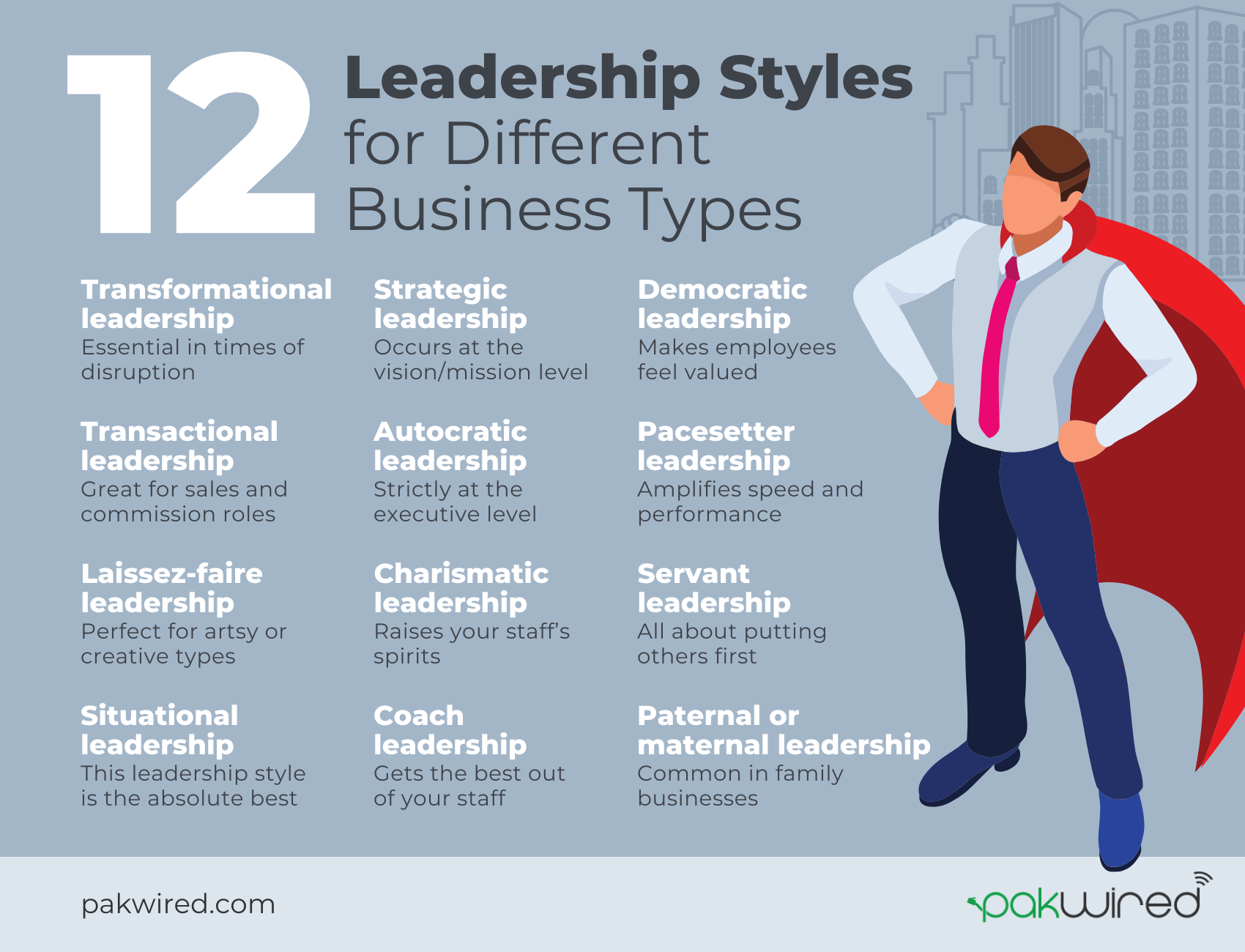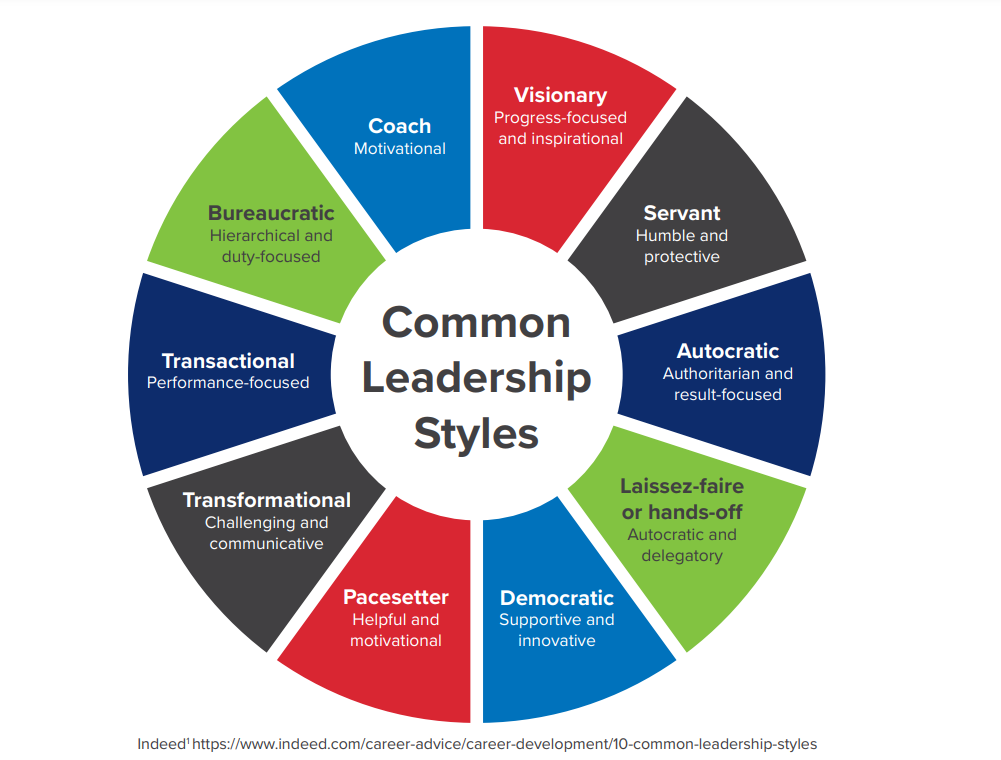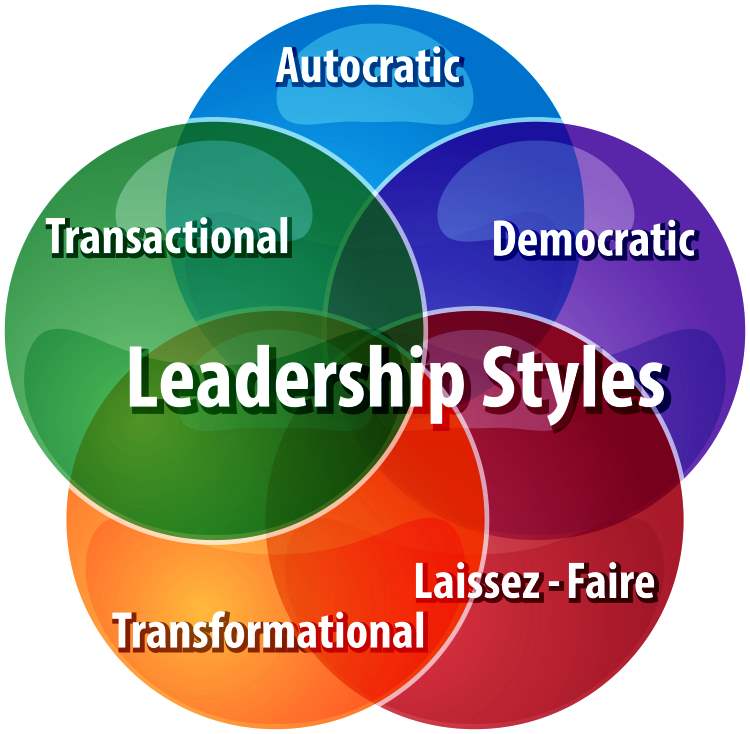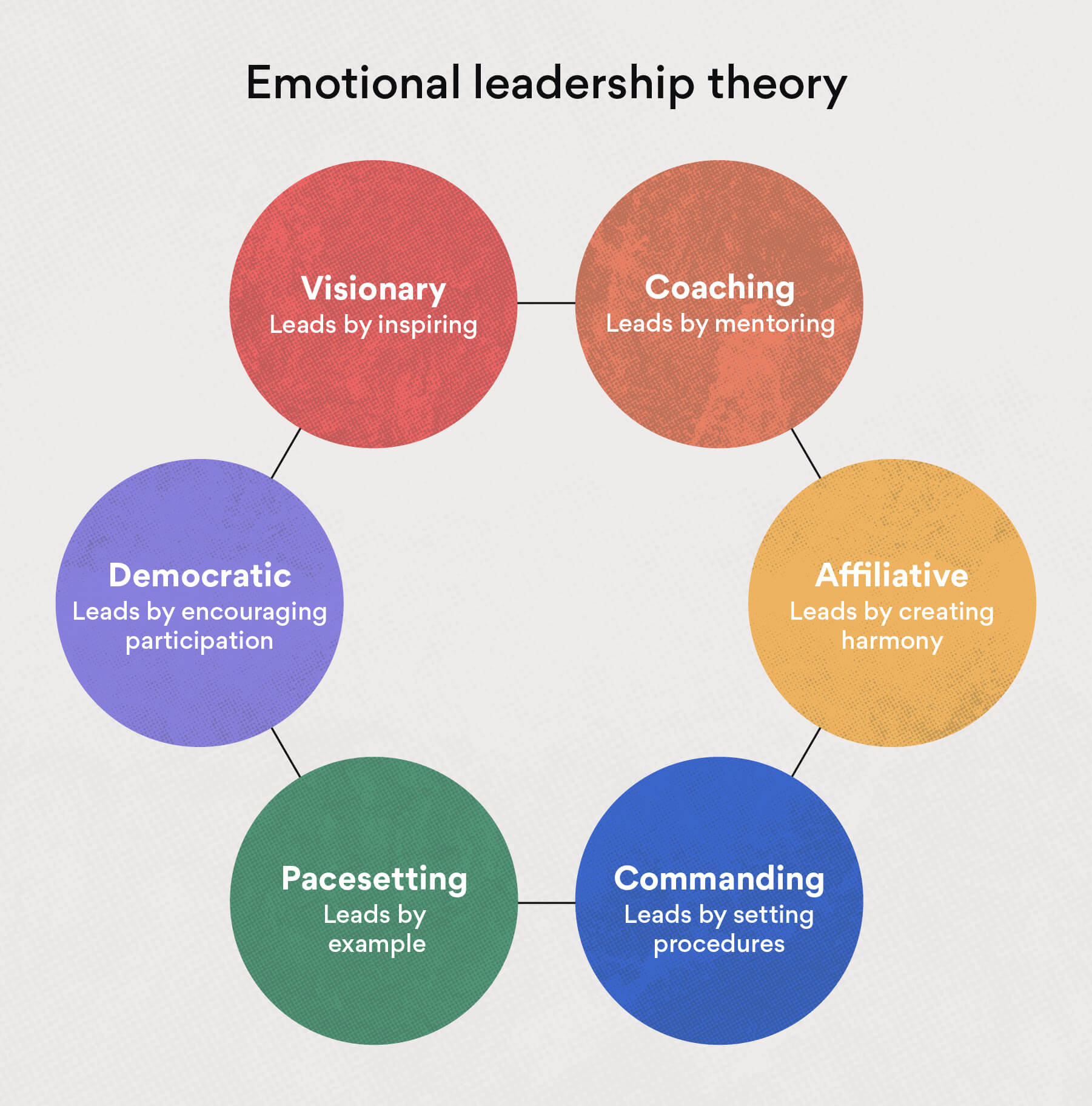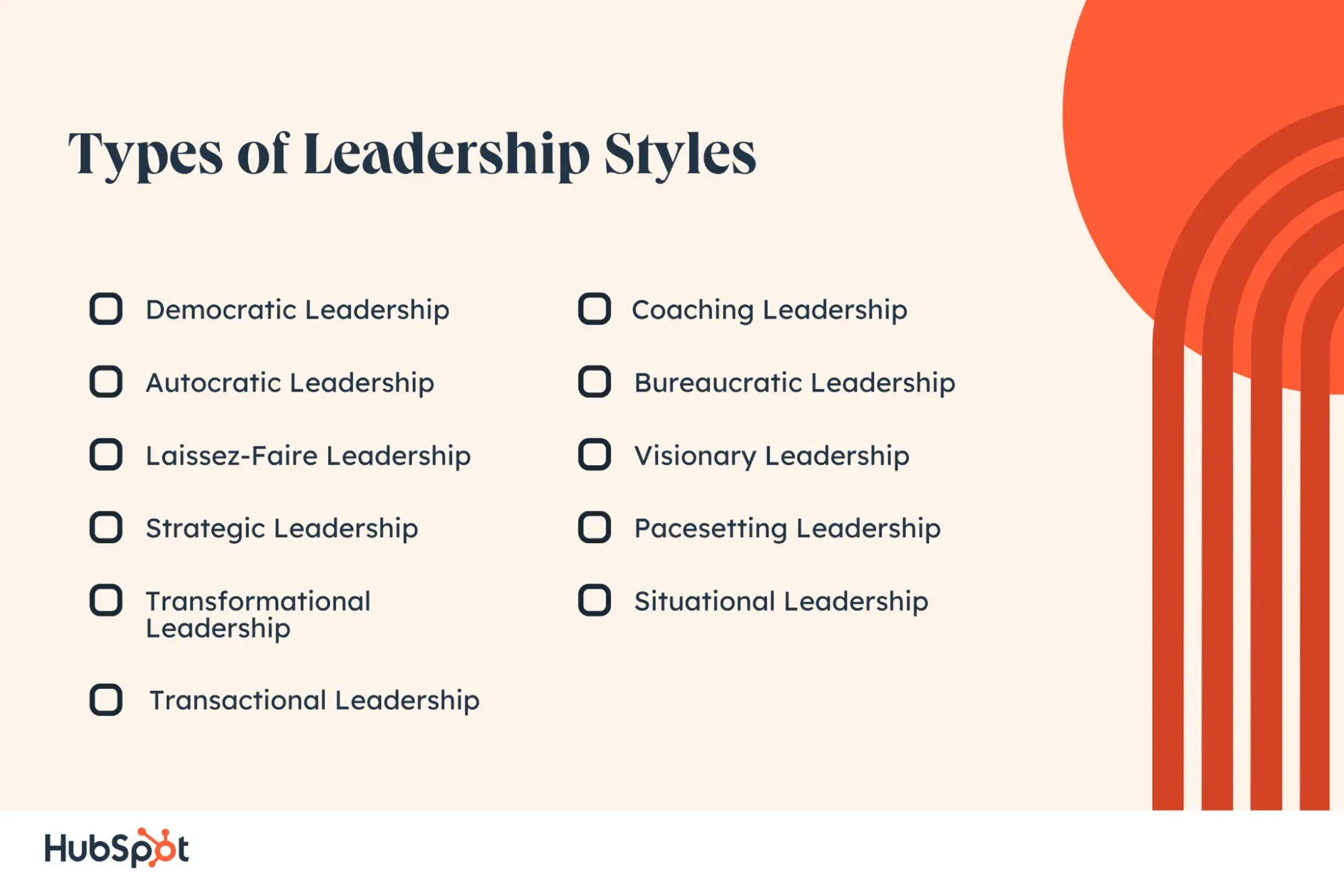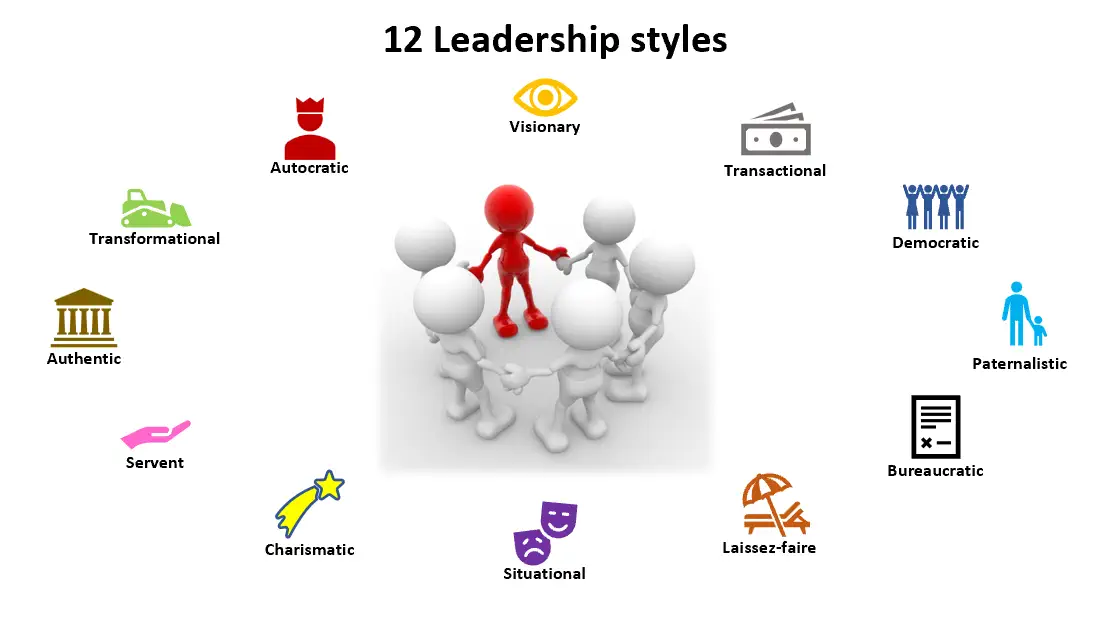What Are The Types Of Leadership Styles
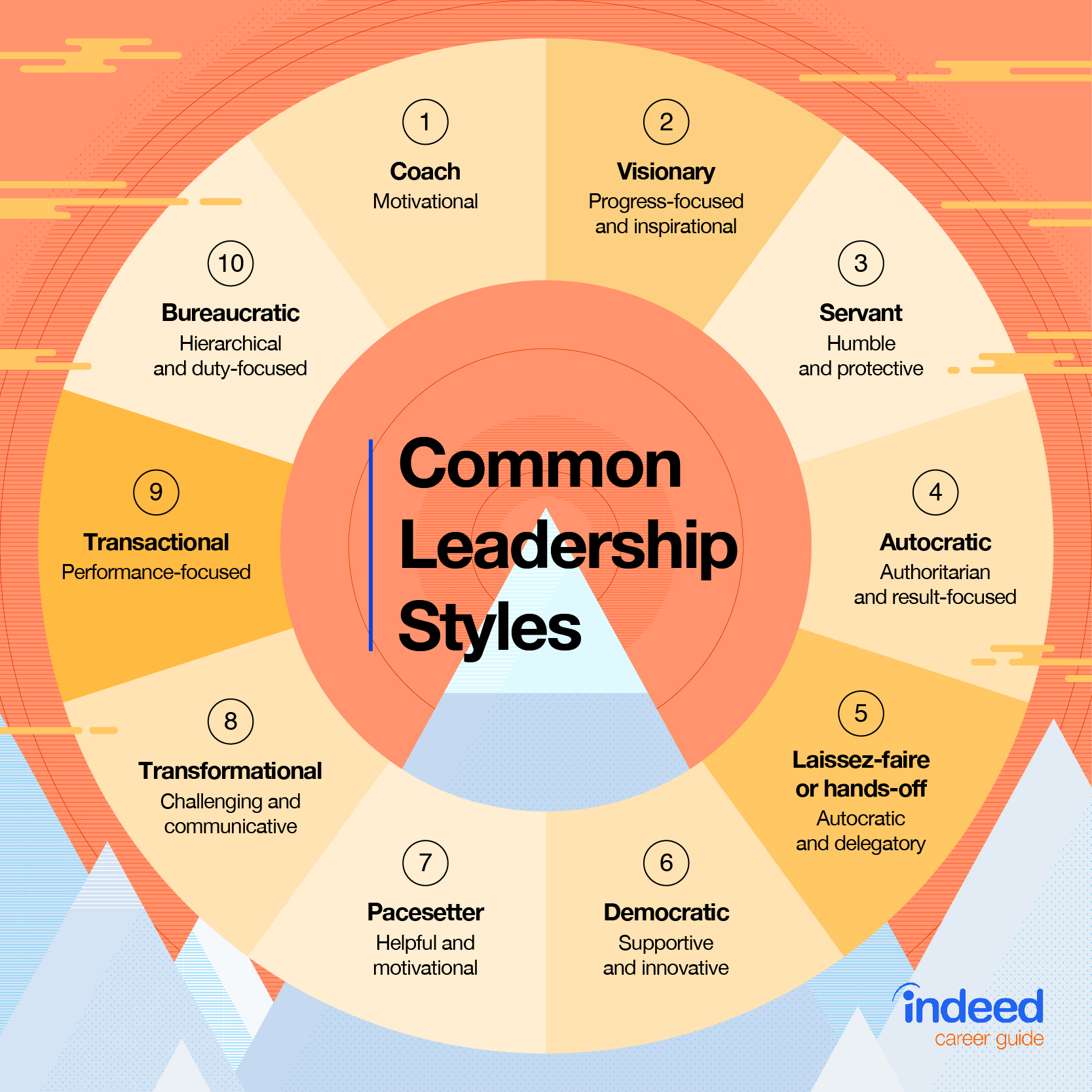
In today's rapidly evolving professional landscape, effective leadership is more crucial than ever. But what constitutes effective leadership? It turns out, there's no one-size-fits-all answer, as various leadership styles can be successful depending on the situation and the team.
Understanding the different types of leadership styles is vital for individuals seeking to improve their leadership capabilities and for organizations aiming to foster a productive and engaged workforce. This article explores several common leadership styles, highlighting their characteristics and potential impact.
Common Leadership Styles
Autocratic Leadership
Autocratic leadership, sometimes called authoritarian leadership, is characterized by a leader making decisions without consulting their team members. This style emphasizes direct control and centralized authority. Instructions are given clearly, and compliance is expected.
While it can be effective in situations requiring quick decisions or during crises, this style can also stifle creativity and lead to decreased morale if overused, according to research by the Harvard Business Review.
Democratic Leadership
In contrast to autocratic leadership, democratic leadership, also known as participative leadership, involves team members in the decision-making process. The leader seeks input and feedback from the team before making a final decision.
This collaborative approach can foster a sense of ownership and increase employee engagement. Studies by the Society for Human Resource Management (SHRM) have shown that democratic leadership often leads to higher levels of job satisfaction and productivity.
Laissez-faire Leadership
Laissez-faire leadership, translating to "let them do," is a hands-off approach where the leader provides minimal guidance or direction. Team members are given significant autonomy and responsibility.
This style can be effective with highly skilled and self-motivated teams but can lead to confusion and lack of direction if team members require more support. This style is usually used when individual team member has more expertise than the leader.
Transformational Leadership
Transformational leadership focuses on inspiring and motivating team members to achieve a shared vision. These leaders are often charismatic and passionate, encouraging innovation and growth.
Bernard M. Bass, a prominent researcher in leadership studies, highlighted that transformational leaders inspire their followers to transcend their self-interests for the good of the organization. This leads to a higher level of commitment and performance.
Transactional Leadership
Transactional leadership is based on a system of rewards and punishments. Leaders set clear goals and expectations, and team members are rewarded for meeting those goals and punished for failing to meet them.
While it can be effective in driving short-term results, this style may not foster creativity or long-term innovation. It is often seen as less inspiring than transformational leadership, notes a report by the Center for Creative Leadership.
Servant Leadership
Servant leadership prioritizes the needs of team members and focuses on empowering them to succeed. Servant leaders act as mentors and facilitators, supporting their team's growth and development.
This style can build trust and loyalty within a team, creating a positive and supportive work environment. This is effective in the long run. This leadership style is not effective when under pressure.
Choosing the Right Style
The most effective leadership style often depends on the specific context, the team's characteristics, and the organization's culture. Some leaders adapt their style depending on the situation, adopting a more directive approach in a crisis and a more collaborative approach during routine operations.
Kurt Lewin, a renowned social psychologist, emphasized the importance of situational leadership, suggesting that effective leaders need to be flexible and adaptable. His work highlights that no one leadership style is universally effective.
The Impact of Leadership Styles
Understanding the different leadership styles can have a significant impact on both individuals and organizations. By recognizing their own leadership tendencies and the needs of their teams, leaders can create a more effective and engaging work environment.
For organizations, promoting leadership development programs that cover these different styles can lead to a more adaptable and resilient workforce. Furthermore, a better understanding of leadership styles contributes to a more inclusive and supportive workplace culture.
Ultimately, the key to effective leadership lies in understanding the various approaches available and adapting them to the specific needs of the situation and the team. By doing so, leaders can inspire their teams to achieve their full potential and contribute to the overall success of the organization.



